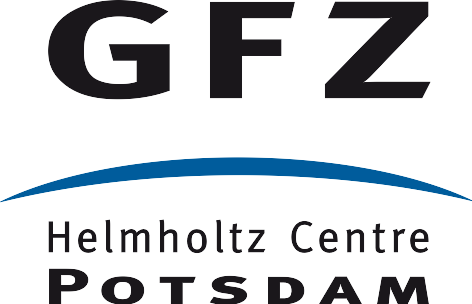EGMAP: Exploitation of GNSS tropospheric gradients for severe weather Monitoring And Prediction
Global Navigation Satellite System (GNSS) has revolutionized positioning, navigation, and timing, becoming a common part of our everyday life. A geophysical key application is atmospheric water vapor monitoring. Currently, data from European GNSS networks are operationally used to improve weather forecasts. However, the impact of the GNSS Zenith Total Delays (ZTDs) in the forecast systems are limited due to its limited atmospheric information content. The project EGMAP funded by DFG will pioneer the development and usage of next generation data products; tropospheric gradients (Fig. 1). The new data products are expected to improve Numerical Weather Prediction (NWP).
![[Translate to English:] Die Bildmitte zeigt ein Beispiel einer GNSS Gradienten-Karte. Im Bild links ist zum Vergleich die aus einem Numerischen Wettervorhersagemodell abgeleitete Gradienten-Karte gezeigt. Um zu demonstrieren, dass die Präsenz von Gradienten mit speziellen Wetterlagen in Verbinndung steht, sind die Bilder mit dem Radar Daten (Niederschlag) des Deutschen Wetterdienstes (DWD) überlagert. Die stationsspezifischen GNSS Integrierten Wasserdampf Werte im Bild rechts zeigen, dass die GNSS Gradienten mit horizontalen Gradienten im Integrierten Wasserdampf in Verbinndung stehen; typischerweise zeigen die Gradienten den Übergang von trockenen in feuchte Regionen.](/fileadmin/_processed_/7/0/csm_EGMAP_Fig1_8b6b4b11b5.png)
The main innovations which will be addressed by the project are (Fig. 2):
- Provide GNSS-ZTDs and tropospheric gradients in near-real-time and setting up of a publicly accessible monitoring system.
- Implement new operators in the variational/ensemble data assimilation system of the Weather Research and Forecasting (WRF) model.
- Conduct impact studies with data from a network of GNSS stations using advanced data assimilation techniques with the state-of-the-art NWP model.
References:
Skamarock, W.C.; Klemp, J.B.; Dudhia, J.; Gill, D.O.; Barker, D.M.; Duda, M.G.; Huang, X.Y.; Wang, W.; Powers, J.G. A Description of the Advanced Research WRF Version 3; NCAR tech. note NCAR/TN-475+STR; NCAR: Boulder, CO, USA, 2008.
Zus, F., G. Dick, S. Heise, and J. Wickert (2015), A forward operator and its adjoint for GPS slant total delays, Radio Sci., 50, pp. 393-405, doi.org/10.1002/2014RS005584.
Zus, F.; Douša, J.; Kačmařík, M.; Václavovic, P.; Dick, G.; Wickert, J. Estimating the Impact of Global Navigation Satellite System Horizontal Delay Gradients in Variational Data Assimilation. Remote Sens. 2019, 11, 41. https://doi.org/10.3390/rs11010041.
Zus, F.; Thundathil, R.; Dick, G.; Wickert, J. Fast Observation Operator for Global Navigation Satellite System Tropospheric Gradients. Remote Sens. 2023, 15, 5114. https://doi.org/10.3390/rs15215114
Link to GEPRIS project data base of DFG:
gepris.dfg.de/gepris/projekt/443676585


![[Translate to English:] Schematische Darstellung der Arbeitspakete des Projekts](/fileadmin/_processed_/5/6/csm_EGMAP_Fig2_eb86da22af.jpeg)
